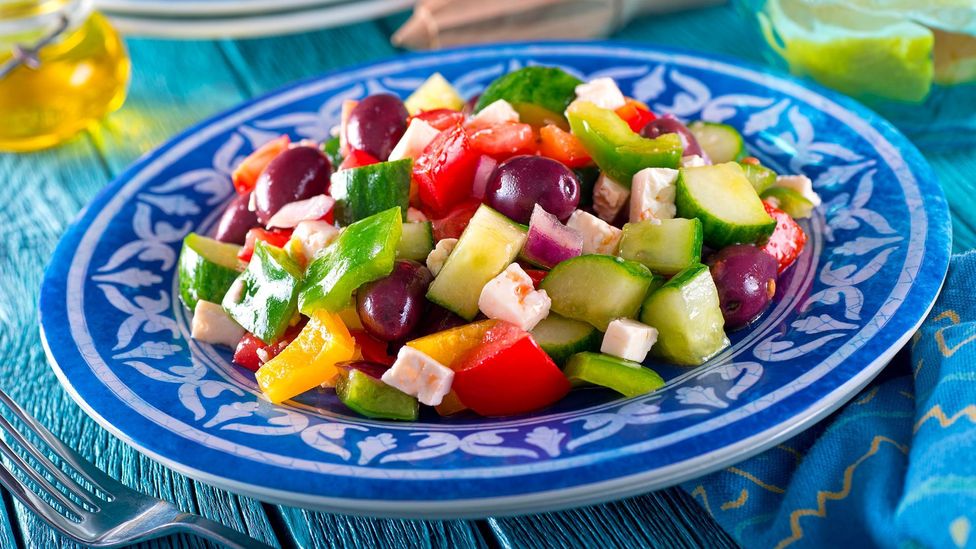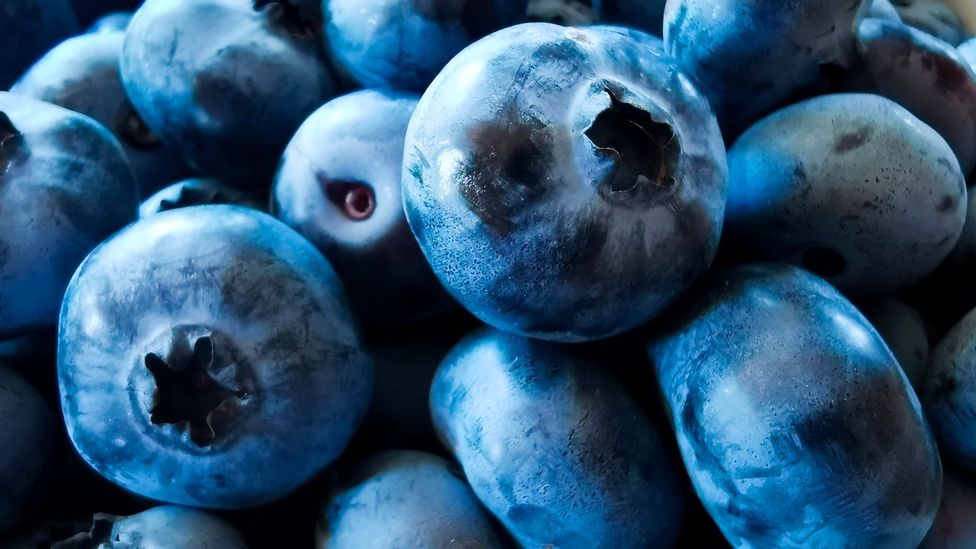Most of us are faced with the same choice numerous times a day: what to eat. Along with price, accessibility and preference, we'll often use a food's healthfulness to help us make a decision.
But when we zoom out to inspect our overall diets, how do we know we're getting the nutrients we need?
It's widely accepted by researchers that we need a varied diet, and that one way to do this is by eating all the colours of the rainbow. But is colour the best guide to getting all the nutrients we need?
The proof may be in the Mediterranean diet, which contains a lot of fruit, vegetables and healthy fats such as extra virgin olive oil, and is frequently rated the healthiest diet by scientists.
It's no coincidence that the diet is packed with different colours, says Francesco Sofi, associate professor of clinical nutrition at the University of Florence.
"Eating a traditional Mediterranean diet means you consume different nutrients and phytonutrients," he says. Phytonutrients are small chemical compounds produced by plants that help us to digest larger nutrients and also play a role in removing toxins from our bodies.
"However, the diet doesn't always contain every colour – it depends on the season, as followers of the diet eat seasonally and locally, and grow their own fruit and vegetables."
Really, he adds, the colours are no different to other vegetable-based diets, such as the vegetarian diet. There are also other reasons the Mediterranean diet is among the healthiest. Mediterranean populations traditionally boil, rather than fry, their vegetables, which preserves nutrients, Sofi says.

The Mediterranean diet, which contains a lot of fruit, vegetables and unsaturated oils, is frequently rated the healthiest by scientists (Credit: Alamy)
But the diet's abundance of fruit and vegetables can't be ignored. The health benefits of a diet rich in fruit and vegetables on our brain and heart are among the most consistent findings within nutrition science, says Deanna Minich, nutritionist and clinician at the University of Western States in Oregon, US.
Eating lots of colours may lower your risk of missing out on all vital nutrients.
"If we're missing a colour of the rainbow, we may be missing a function of that food," says Minich.
This is because plant foods contain thousands of natural compounds called phytonutrients, including carotenoids and flavonoids, which have anti-inflammatory benefits. And different coloured plants come with different benefits.
Blue and purple foods, including blueberries, have a high content of the plant pigment anthocyanin, which has been linked to lowering the risk of heart disease and type two diabetes. Flavones, which give foods a yellow colour, may reduce the risk of heart disease.
"Certain plant pigments travel to certain parts of the body and take residency there," Minich says. "For example, lutein is found in a variety of yellow and green foods, and travels to the macula at the back of the eye, where it may help reduce the risk of macular degeneration."
Some studies show flavonoids may improve brain health, by blocking neurotoxicity in the brain, which is associated with Alzheimer's disease.
After following the diets of 50,000 people for more than 20 years, Tian-shin Yeh, research fellow in epidemiology at Harvard TH Chan School of Public Health, found that those who eat more flavonoid-rich foods, including oranges, peppers, celery and grapefruit, have lower levels of cognitive decline and dementia.
While there's currently no cure for dementia and cognitive impairment in later life, Yeh says, eating more flavonoid-rich foods can help to lower the risk. However, participants who saw the most benefits were those who'd consistently been eating a flavonoid-rich diet for 20 years.
It's never too late to incorporate these foods into your diet and benefit from flavonoids, Yeh says.
Eating a colourful diet, Yeh says, can also help people avoid possible adverse effects of eating too much of one food.
"Food is very complex. For example, research has found that orange juice is associated with a lower risk of cognitive decline, but too much intake is associated with type 2 diabetes," she says. Although, this is because of its sugar content, not flavonoids.
You may also like:
But eating a rainbow diet may also be complex, says Victoria Taylor, a senior dietitian at the British Heart Foundation.
"It could be really tricky to get every colour every day – you could tie yourself in knots," she says.
We also need to eat from other food groups to get all the macronutrients we need, such as protein, she says.
However, Minich argues that the rainbow diet isn't limited to fruit and vegetables, but includes other natural foods, such as herbs, spices, legumes, nuts, seeds, wholegrains, and even tea. She also considers white food as part of the rainbow diet, including tofu, which contains numerous different isoflavones, which have been associated with a lower risk of heart disease and some cancers, as well as cognitive decline.
Eating a variety of colours could mean we eat more fruit and vegetables overall. One study found that prompting people to eat a colourful meal increased their consumption of healthy food.
"If you're eating the same fruit, you'll become satisfied, but if you have a plate of different fruit and vegetables that vary in colour, you're likely to want eat for longer," says Rochelle Embling, PhD student at Swansea University, who wasn’t involved in the study.
"This effect is specific to the food being eaten, so after a meal, dessert remains desirable because it has different sensory characteristics," Embling says.

Blueberries contain anthocyanin, which has been linked to lowering the risk of heart disease (Credit: Beata Zawrzel/Getty Images)
But eating a more colourful diet may also increase the risk of overeating unhealthy food. Embling has found that we're more likely to eat more pizza when it has lots of different coloured toppings. She advises eating varied colours for fruit and vegetables but opting for a smaller colour palette for more indulgent foods. It's also worth noting that artificial colouring in foods, such as cake and sweets, sadly don't count towards a varied healthy diet.
There are other ways, aside from colour, to get a range of nutrients and phytonutrients from your diet, researchers say, such as paying attention to taste. One study found that participants who ate bitter and strong-tasting vegetables over 12 weeks had lower blood pressure and blood sugar at the end, because of their fibre content and the range of phytonutrients they contain.
The study states: "Root vegetables and cabbages are rich sources of antioxidants such as flavonoids, carotenoids, and other bioactive phytochemicals; ingesting these combined in whole foods may allow for synergistic action, thus providing enhanced health-promoting effects."
In other words, they may be healthier than the sum of their parts.
"The colours of food are very important for our diet, but so are flavours, especially [those of] bitter foods, such as rocket, kale, celeriac and green tea," says Minich, who wasn't involved in the study but agrees with its findings and emphasises the benefits of these compounds reacting with each other to further benefit our health.
Another option is to consider which parts of the plant you're eating, says Yeh.
"Turnips and swedes have more similar nutritional values because they are both the root; whereas the nutritional values for cabbage and swede are not that similar because one is the leaf and the other one is the root part of the plant."
Although, Yeh concedes, "Considering the colours may be the easiest way to guide the consumers."
Join one million Future fans by liking us on Facebook, or follow us on Twitter or Instagram.
If you liked this story, sign up for the weekly bbc.com features newsletter, called "The Essential List". A handpicked selection of stories from BBC Future, Culture, Worklife, Travel and Reel delivered to your inbox every Friday.
"eat" - Google News
September 17, 2021 at 02:00PM
https://ift.tt/3kpEdSI
Why eating colourful food is good for you - BBC News
"eat" - Google News
https://ift.tt/33WjFpI
https://ift.tt/2VWmZ3q
Bagikan Berita Ini














0 Response to "Why eating colourful food is good for you - BBC News"
Post a Comment